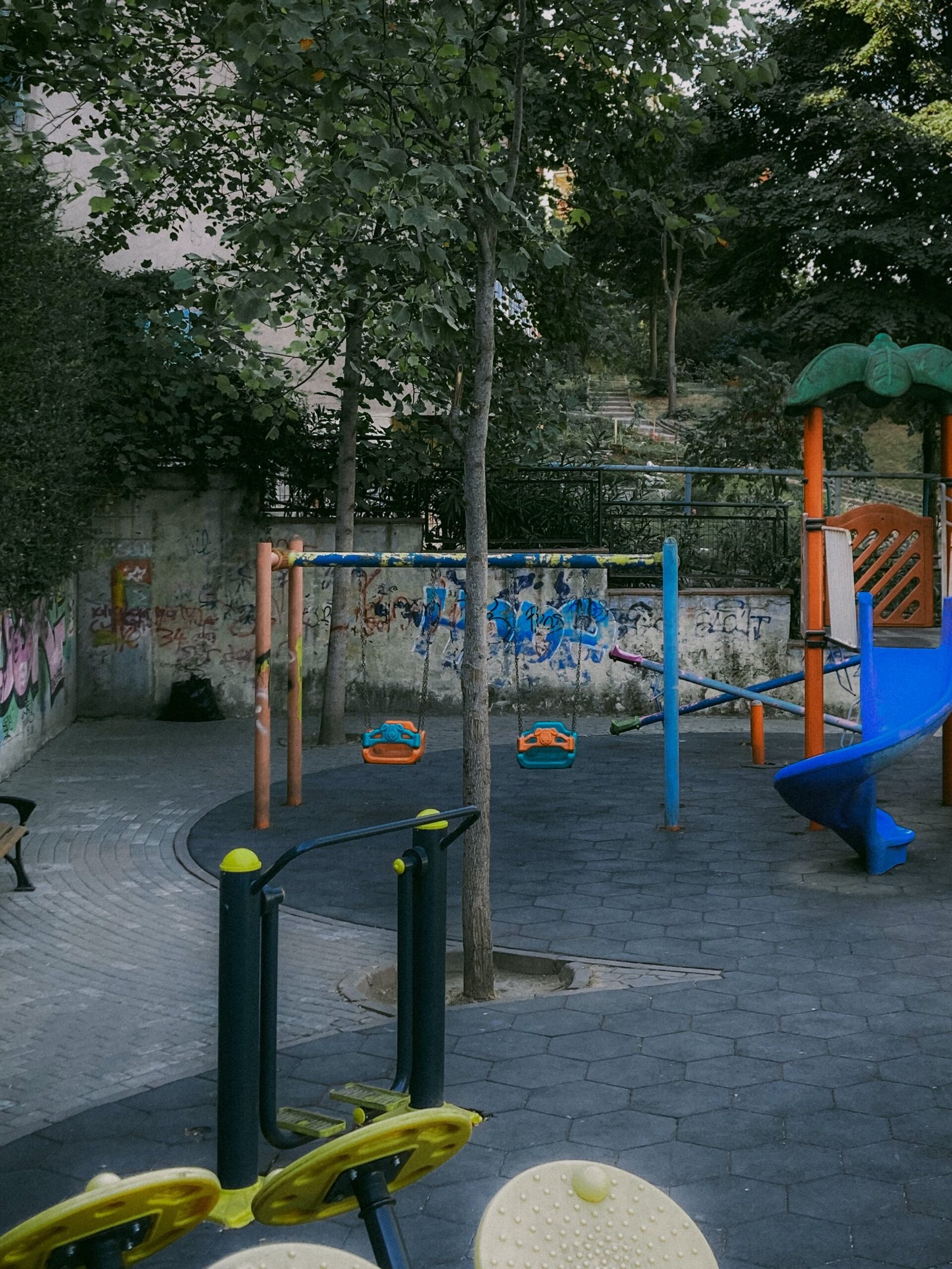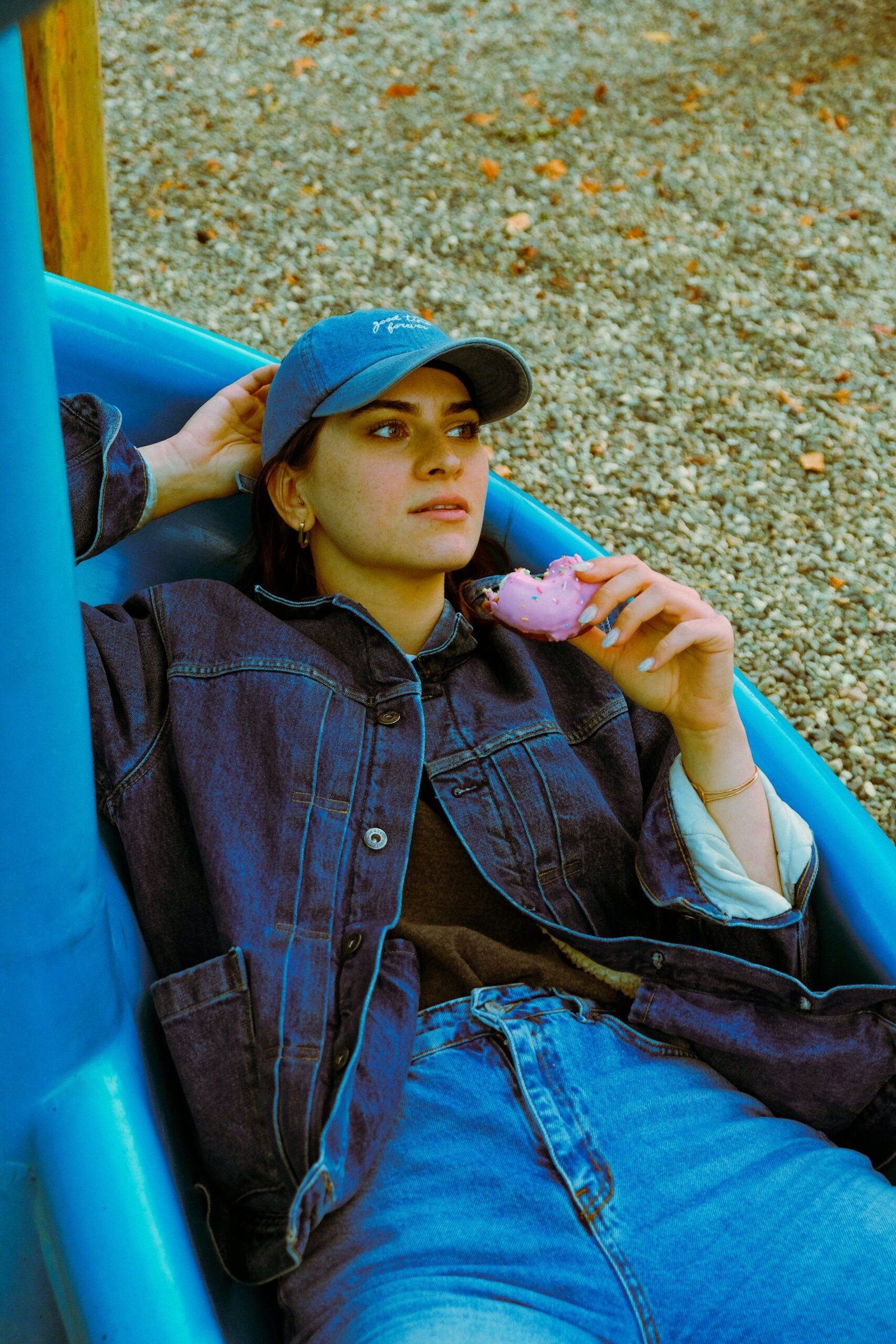
Have you ever wondered how to create a fun and stimulating space for your backyard chickens? In this article, we will explore the ins and outs of designing and building a chicken playground or enrichment area. From incorporating various elements to considering safety measures, you’ll discover the key steps to create a space that will keep your feathered friends entertained and happy. So, let’s dive in and explore the exciting world of chicken playgrounds!

Choosing the Right Location
Considering the Size and Number of Chickens
When designing a chicken playground or enrichment area, one of the first factors to consider is the size and number of chickens you have. Chickens require ample space to roam, scratch, and engage in their natural behaviors. As a general rule of thumb, provide at least 10 square feet of space per chicken. So, if you have five chickens, you would need a minimum of 50 square feet for their playground. Keep in mind that more space is always better and can contribute to happier and healthier chickens.
Providing Sufficient Space
In addition to considering the size and number of chickens, it is essential to provide sufficient space within the chicken playground. Chickens need ample room to spread their wings, run around, and explore their surroundings. Aim to provide a combination of open space and more enclosed areas, such as shrubs or trees, where chickens can take cover or rest. This variety of space will allow the chickens to move freely and engage in natural behaviors.
Ensuring Proper Drainage
Proper drainage is crucial for the health and well-being of your chickens. When selecting a location for their playground, make sure it is well-drained and does not hold water after rainfall. Standing water can not only lead to muddy and uncomfortable conditions for the chickens but also create a breeding ground for bacteria and other harmful organisms. If your chosen location has poor drainage, consider implementing drainage solutions, such as a French drain or raised areas with gravel.
Considering Accessibility and Safety
Accessibility and safety are two important factors when choosing a location for your chicken playground. Ensure that the area is easily accessible to you for feeding, cleaning, and general maintenance. Additionally, consider the proximity to your home and other infrastructure, making it convenient for you to monitor and care for your chickens.
Safety is paramount to protect your flock from predators and potential hazards. Choose a location that can be easily secured with proper fencing and barriers. Avoid areas where predators, such as raccoons or foxes, are known to frequent. Also, take into account any nearby hazards that could pose a threat to the chickens, such as toxic plants or neighboring animals.
Designing the Chicken Playground
Creating Different Activity Zones
A well-designed chicken playground should provide a variety of activity zones to cater to the different needs and behaviors of your chickens. Consider incorporating zones for scratching, foraging, and dust bathing. By creating designated spaces for these activities, you encourage natural behavior and mental stimulation. This also helps prevent overcrowding and potential conflicts among the chickens.
Incorporating Natural Elements
To make the chicken playground more engaging and stimulating, incorporate natural elements. Introduce plants, shrubs, or trees that provide shade, foraging opportunities, and visual interest. Natural elements also contribute to the overall aesthetic appeal of the area. Ensure that any plants chosen are safe for chickens, as some plants can be toxic to them. Research chicken-friendly plants and consult with local experts or poultry associations for guidance.
Adding Structures and Obstacles
Enhance the chicken playground by adding structures and obstacles that provide physical challenges and entertainment for the chickens. This can include perches, ladders, balance beams, or low platforms. These structures not only engage the chickens physically but also allow them to practice their natural instincts, such as roosting or exploring elevated areas.
In addition to structures, consider incorporating obstacles or mazes made of low fences, logs, or hay bales. These obstacles encourage chickens to navigate and problem-solve, adding an element of mental stimulation to their daily routines.
Including Roosting and Nesting Areas
Chickens need comfortable and secure areas for roosting and nesting. Include roosting bars or branches at varying heights to mimic their natural environment. This allows them to perch and rest during the day or sleep at night. Nesting boxes should also be provided, offering secluded spots for egg-laying. Consider providing one nesting box for every four to five hens and fill them with soft bedding, such as straw or wood shavings.
Providing Shade and Shelter
Just like humans, chickens need protection from the sun and extreme weather conditions. Ensure that the chicken playground offers ample shade to keep the chickens cool during hot summer days. This can be achieved by incorporating trees, shade cloth, or even artificial structures like umbrellas or awnings. In addition to shade, provide adequate shelter for the chickens to retreat to during rain or inclement weather. Consider adding a coop or covered area where they can find protection from the elements.

Selecting Suitable Materials
Choosing Non-Toxic and Durable Materials
When selecting materials for the chicken playground, prioritize those that are non-toxic and safe for chickens. Avoid using treated lumber, as the chemicals can be harmful if ingested or come into contact with the chickens’ feathers or feet. Opt for materials such as untreated wood, stainless steel, or galvanized metal. These materials are durable and do not pose a risk to the health of your flock.
Opting for Easy to Clean Surfaces
Maintaining cleanliness in the chicken playground is essential for overall chicken health and hygiene. Opt for surfaces that are easy to clean and sanitize, such as concrete, gravel, or composite decking. These materials can be hosed down or swept clean to remove droppings and debris. Avoid materials like dirt or grass, as they can be more challenging to clean and may harbor parasites or bacteria.
Avoiding Sharp Edges or Points
Ensure the safety of your flock by choosing materials that do not have sharp edges or points that could potentially injure the chickens. Sand down any rough or sharp sections and cover exposed nails or screws. Smooth, rounded surfaces are ideal to prevent accidental scratches or cuts.
Considering Materials for Structures
When designing structures within the chicken playground, consider suitable materials that are safe and sturdy. For perches and roosting bars, choose natural materials like branches, as they provide chickens with a secure and comfortable grip. If incorporating man-made structures, ensure they are sturdy, such as solid wooden planks or metal bars. Avoid using wire mesh or materials with large gaps that could potentially trap or injure the chickens.
Ensuring Safety and Security
Using Proper Fencing and Barriers
To keep your chickens safe from predators and prevent them from wandering into unwanted areas, it is crucial to utilize proper fencing and barriers. Install sturdy and predator-proof fencing around the perimeter of the chicken playground. Make sure the fence is buried at least 6 inches into the ground to discourage digging predators.
Consider adding top netting or electric fencing for added security. Keep in mind that the fencing should be tall enough to prevent chickens from flying over and should have small enough gaps to deter predators from squeezing through.
Checking for Potential Hazards
Inspect the chicken playground regularly for potential hazards that could harm your flock. This includes removing any sharp objects, toxic plants, or chemicals that may have found their way into the area. Check for loose or broken structures, rusty nails, or any other potential risks. Repair or replace any damaged materials to ensure the safety of your chickens.
Minimizing Predators and Intruders
Take proactive measures to minimize the chances of predators or intruders entering the chicken playground. Consider installing motion-activated lights or sound devices that can deter nocturnal predators. Clear any vegetation or brush around the perimeter to eliminate hiding spots for potential threats. Additionally, keep feeders and water sources elevated or secure them in predator-proof containers to prevent attracting unwanted visitors.

Providing Ample Food and Water
Designing Feeding Stations
Within the chicken playground, provide designated feeding stations to ensure easy access to food and minimize competition among the chickens. Place multiple feeding stations in different areas to spread out the chickens and prevent overcrowding. Use sturdy feeders that can withstand the pecking and scratching of the chickens. This will ensure that the chickens have constant access to their food without it being contaminated or wasted.
Incorporating Water Sources
Water is essential for the health and well-being of chickens. Incorporate water sources, such as waterers or troughs, within the chicken playground. Ensure that the water is clean, fresh, and easily accessible to the chickens. Regularly check and clean the water sources to prevent the buildup of algae or other contaminants.
Ensuring Easy Access to Food and Water
To ensure easy access to food and water, position the feeding and watering stations at a suitable height for the chickens. The stations should be low enough for them to reach comfortably but high enough to avoid contamination from droppings or bedding. Consider elevating the stations or using sturdy platforms to provide easy access while keeping the feed and water clean and uncontaminated.
Landscaping and Vegetation
Choosing Chicken-Friendly Plants
When landscaping the chicken playground, choose plants that are safe for chickens and provide additional benefits. Select plants that are non-toxic, as some common garden plants can be harmful or toxic to chickens when ingested. Research chicken-friendly plants and focus on those that provide shade, foraging opportunities, or colorful visual interest. A few examples of chicken-friendly plants include marigolds, sunflowers, lavender, or oregano.
Adding Grass or Turf
Allow your chickens to enjoy the benefits of fresh grass by adding a patch of turf or grass to their playground. Grass provides a soft and comfortable surface for chickens to walk on and encourages natural behaviors such as scratching and foraging. However, ensure that the grass is well-maintained and not treated with pesticides or potentially harmful chemicals.
Creating Dust Bathing Areas
Chickens engage in dust bathing to keep themselves clean and to control parasites. Create dedicated dust bathing areas in the chicken playground by providing loose soil or sand. Chickens will instinctively roll in the dust, effectively removing excess oil, dirt, and parasites from their feathers. Encourage this natural behavior by keeping the dust bathing area dry and free of debris.
Considering Composting and Foraging
To provide additional environmental stimulation and benefit the chickens, consider incorporating composting and foraging areas within the chicken playground. Composting not only helps manage waste effectively but also provides a natural source of nutrition for the chickens. Designate a composting area where kitchen scraps and chicken waste can be added and turned regularly.
Foraging areas can be created by scattering treats, insects, or seeds throughout the playground. This encourages chickens to engage in their natural foraging behaviors, keeping them mentally stimulated and providing additional sources of nutrients.
Enhancing Environmental Stimulation
Introducing Toys and Puzzles
To keep your chickens physically and mentally active, introduce toys and puzzles into the chicken playground. Hanging treat dispensers, puzzle feeders, or swing perches can provide hours of entertainment and keep the chickens engaged. Avoid small or easily ingestible toys to prevent choking hazards. Rotate the toys regularly to maintain interest and prevent boredom.
Providing Perches and Ladders
Chickens naturally seek elevated perches, so provide opportunities for them to roost or perch within the playground. Incorporate sturdy perches or ladder-like structures at varying heights to cater to chickens’ natural instincts. This not only fulfills their nature but also provides resting spots and a vantage point for the chickens to observe their surroundings.
Adding Sandboxes or Mulch Pits
Chickens enjoy digging and scratching in loose materials like sand or mulch. Adding a designated sandbox or mulch pit within the playground can fulfill this instinctive behavior. Provide a shallow area filled with sand or wood chips for the chickens to enjoy their digging and scratching activities. This not only keeps them mentally stimulated but also helps to keep their nails and beaks in good condition.
Creating Hiding Places or Movable Structures
Hiding places or movable structures can provide chickens with a sense of security and entertainment. Utilize materials like cardboard boxes or lightweight structures that can be easily moved or rotated within the playground. These hiding places offer shelter, a cozy retreat, or a temporary obstacle for the chickens to explore and interact with.
Ensuring Cleanliness and Hygiene
Implementing a Regular Cleaning Routine
Maintaining cleanliness within the chicken playground is essential for the health of your flock. Implement a regular cleaning routine to remove droppings, debris, and other waste. This involves using a rake or shovel to collect solid waste and regularly sweeping or hosing down the playground to remove any residual debris. Regular cleaning prevents the buildup of bacteria, parasites, and odors.
Using Natural or Safe Cleaning Products
When cleaning the chicken playground, prioritize the use of natural or safe cleaning products. Avoid harsh chemicals or disinfectants that may be harmful to the chickens or the environment. Instead, opt for natural solutions such as vinegar or hydrogen peroxide diluted in water. These non-toxic alternatives effectively sanitize surfaces while being safe for your chickens.
Managing Waste and Odor Control
Proper waste management is crucial for a clean and hygienic chicken playground. Regularly remove droppings from the playground to prevent the buildup of waste. Consider implementing composting or worm bin systems to handle the waste effectively and benefit from nutrient-rich compost for your gardening needs.
Odor control is important not only for your comfort but also for the overall health of your flock. Ensure proper ventilation within the chicken playground to minimize odor and prevent the buildup of ammonia. This can be achieved through adequately sized openings or windows in coops or by utilizing exhaust fans if necessary.
Maintaining Proper Ventilation
Good ventilation is essential for the well-being of your chickens. Proper airflow within the chicken playground helps remove moisture, odors, and harmful gases, such as ammonia, that can build up from droppings. This also helps regulate temperature and reduce the chances of respiratory illnesses.
Ensure that coops or sheltered areas within the playground allow for adequate airflow. This can be achieved by installing windows, vents, or providing open-air spaces. Regularly assess the ventilation system, ensuring that it is functioning effectively and free from blockages.
Considering Seasonal Changes
Adapting the Playground for Different Seasons
As the seasons change, it is important to adapt the chicken playground accordingly to ensure the comfort and well-being of your flock. During hot summer months, provide additional shaded areas or cooling mechanisms, such as misters or fans. Adjust the feeding and watering stations to accommodate increased heat and prevent spoilage of food or water.
In winter, provide additional insulation or windbreaks to shield the chickens from harsh weather conditions. Consider adding heating devices, such as heat lamps, to provide extra warmth during extreme cold. Ensure the coop or sheltered areas are well-insulated and draft-free, protecting the chickens from freezing temperatures.
Providing Winterization Measures
Winterization measures are necessary to keep your chickens safe and comfortable during colder months. Make sure the coop or sheltered areas within the playground are well-insulated and draft-free. Insulate walls and ceilings, and use weatherstripping around doors and windows to prevent drafts.
Provide additional bedding, such as straw or wood shavings, to keep the chickens warm and comfortable. Consider adding heat lamps or heated perches to provide supplemental warmth during extreme cold. Regularly check for frozen water sources and ensure the chickens have access to unfrozen water at all times.
Addressing Summer Heat Concerns
High temperatures and humidity can pose risks to the health of your chickens. To address summer heat concerns, ensure adequate shade is available within the chicken playground. Utilize shade cloth, umbrellas, or natural structures like trees to provide relief from the sun’s rays. Install misting systems or fans to help cool the area and reduce heat stress.
Ensure that the chickens have access to cool, fresh water at all times. Consider adding ice cubes or frozen water bottles to their water sources to help keep the water cool for longer periods. Regularly monitor your flock for signs of heat stress, such as panting or reduced activity, and take immediate action to cool them down if necessary.
Monitoring and Evaluating the Playground
Observing Chicken Behavior and Interaction
Monitoring your chickens’ behavior and interaction within the playground is crucial to evaluate the effectiveness of the design and make any necessary adjustments. Observe how the chickens utilize the different activity zones, structures, and resources provided. Are they engaging in natural behaviors such as scratching, foraging, and dust bathing? Do they appear content and relaxed? Pay attention to any signs of stress or aggression that may indicate the need for changes in the playground design.
Inspecting for Wear and Tear
Regularly inspect the chicken playground for signs of wear and tear that may compromise safety or functionality. Check for loose or broken structures, damaged fencing, or deterioration of surfaces. Replace or repair any damaged materials promptly to ensure the continued safety and enjoyment of your flock.
Seeking Feedback and Making Adjustments
Lastly, seek feedback from other chicken owners, experts, or online forums to gather insights and ideas for further improving your chicken playground. Share your experiences and learn from others who have designed and built similar environments for their flocks. Continuous improvement is key to creating a stimulating and enjoyable playground for your chickens.
Remember, designing and building a chicken playground requires careful consideration of the chickens’ needs, safety, and continuous evaluation. With these guidelines and your own creativity, you can create a welcoming and enriching space where your chickens can thrive.







